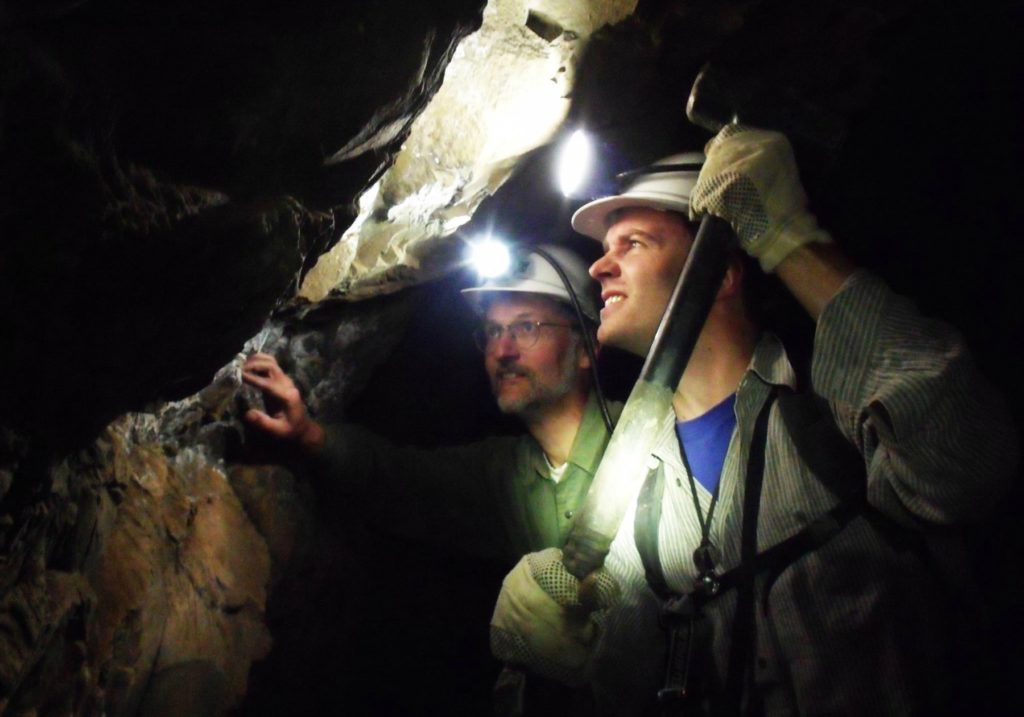@WFS,World Fossil Society,Riffin T Sajeev,Russel T Sajeev
The earliest signs of life on a young Earth, around 3.5 billion years ago, have generally come from the ocean in the form of fossilized microbes within ancient rock. Now, scientists working in the Barberton Greenstone Belt in South Africa—where some of the oldest rocks on Earth are preserved—find evidence of terrestrial microbial life that they estimate is about 3.22 billion years old. The results, published today (July 23) in Nature Geosciences, represent the oldest signs of land-based life on our planet yet discovered
“This work represents the oldest and least ambiguous work that we have so far that life existed on land already 3.2 billion years ago,” Kurt Konhauser, a professor of earth and atmospheric sciences at the University of Alberta in Canada who was also not involved in the work, writes in an email to The Scientist.
Researchers have found more fossil evidence of the earliest microbial life in shallow, marine deposits, which supports the dominant theory that before 3 billion years ago, most of the Earth consisted of oceans interspersed with volcanic islands. Evidence for life on land has so far been harder to come by. Part of the reason is that ancient marine rocks appear to be better preserved than terrestrial sediments. Another issue, according to Martin Homann, a postdoc at the European Institute for Marine Studies (IUEM) in Brest, France, is that very old terrestrial sediments are also difficult to distinguish from marine sediments because so-called index fossils—which help to determine the environment and to date rocks—do not exist from this early period of Earth’s history.
According to the study authors, the previously oldest visible fossilized remains of microbes on land were about 2.7 billion years old, found in a different location from the Barberton Greenstone Belt in South Africa and also in Australia. In a study published last year, researchers analyzed rocks from what they interpreted as hot springs in the Pilbara region of Western Australia. Although that paper, according to Konhauser, suggests that some 3.5-billion-year-old volcanoes may have been on land, the current study is definitive in showing there was extensive exposure of continental crust on the Earth’s surface 3.2 billion years ago.
For the current study, Homann and his colleagues focused on ancient sedimentary rocks, known as the Moodies Group, in the Barberton Greenstone Belt that were shown by geologists earlier to be approximately 3.22 billion years old. There, the team uncovered what are known as fossilized microbial mats—composed mainly of the imprints of bacteria and archaea and are among the earliest preserved forms of life. While living on the early Earth, these microbial community mats became interlayered and packed together with sedimentary rock made of rounded stones of different sizes that geologists call a conglomerate.
The team first analyzed and described the rocks’ positions in detail and compared these to current rock formations to understand how they moved, formed, and were preserved. The investigators concluded that the mat-forming microbes were indigenous to the host rock and part of what was once an ancient river delta.
“These are good data that show indeed that these fossilized, microbial mats [in Barberton Greenstone Belt] come from a terrestrial environment,” says Dominic Papineau, who studies the origin and evolution of life at the London Centre for Nanotechnology at University College London and who was not involved in the study.
The researchers then analyzed both the organic carbon and nitrogen isotopes within these fossilized terrestrial microbial mats and compared the profiles to isotopes extracted from nearby fossilized marine microbial mats. Both the carbon and nitrogen isotope values from the terrestrial and marine samples were unique from one another, suggesting that there were differences in the metabolism of microbes in the ocean compared to those on land.
“Already at 3.2 billion years ago, we see evidence of differences in mat-forming microbial communities suggesting that some were likely better adapted for life in the ocean versus on land,” says Homann.

A major question for scientists is whether the early Earth might have already had localized pockets of free oxygen in an atmosphere generally lacking it. Most modern microbial mats are composed of cyanobacteria, which create oxygen as a byproduct of their metabolism (oxygenic photosynthesis), and are thought to have been responsible for the accumulation of oxygen in Earth’s atmosphere. “The data here cannot distinguish whether these microorganisms produced oxygen through their photosynthesis or did anoxygenic photosynthesis,” says Papineau.
The nitrogen isotope values, which reflect the ratio of the most abundant nitrogen-14 and the more rare and heavier nitrogen-15, of the land microbial mats were more positive compared to the marine samples. This suggested to Homann and his colleagues that the land 3.2 billion years ago contained atmospheric nitrate. Another way that these positive nitrogen values could have come about would be if there were atmospheric oxygen 3.22 billion years ago, which is less likely, according to the study authors, as it would imply that there already existed oxygen-producing cyanobacteria, for which there is currently not enough evidence.
For Konhauser, it would be interesting to dig deeper into the source of the nitrate in the samples and whether it might have indeed come from the atmosphere or via generation of oxygen from the ancient photosynthetic bacteria. “The structures and isotopic composition of the microbial mats certainly seem to suggest the presence of photosynthetic microbes already existing on land,” writes Konhauser. If the nitrate were indeed formed by the microbes in the mats, he adds, then perhaps oxygen-producing cyanobacteria were around at this early stage of the Earth’s history.
M. Homann et al., “Microbial life and biogeochemical cycling on land 3,220 million years ago,” Nature Geosciences, doi.org/10.1038/s41561-018-0190-9, 2018.
Source: Article by Anna Azvolinsky,The Scientist.com
@WFS,World Fossil Society,Riffin T Sajeev,Russel T Sajeev



 March 22nd, 2020
March 22nd, 2020  Riffin
Riffin 
 Posted in
Posted in 